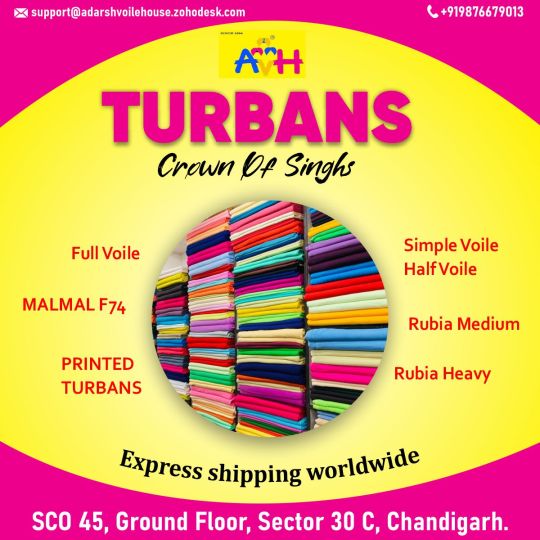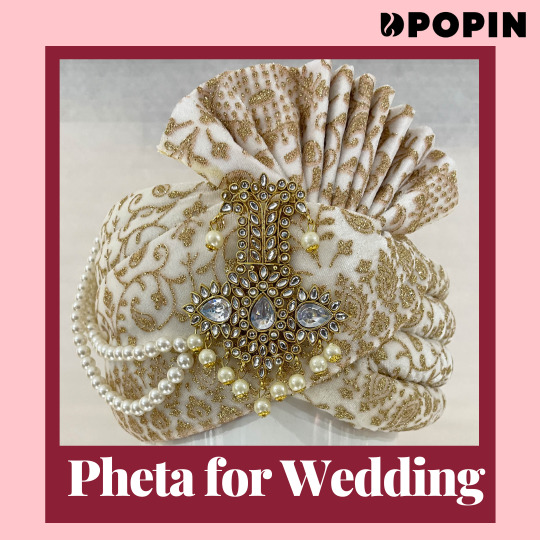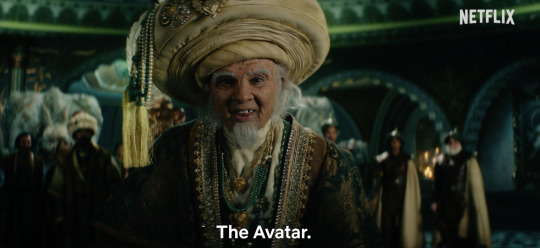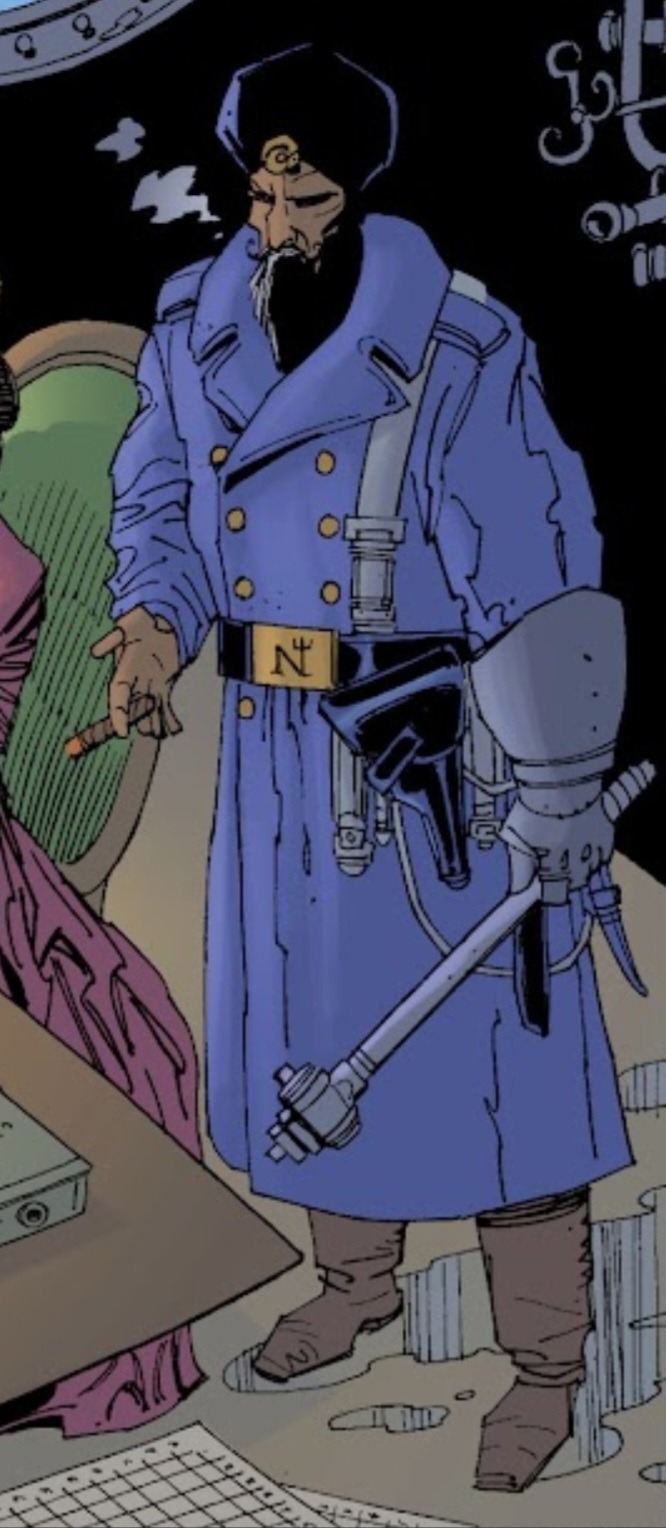#pagri
Text
Turban Center in Ajitgarh
Looking for the perfect turban for your special day in Ajitgarh? Look no further! At Wedding Pagri House, we are your go-to turban center, offering top-notch services to ensure you look your best. Our skilled team provides turban tying and training services, catering to weddings and special occasions. With our expertise, we deliver the best turban tying experience in Ajitgarh. Whether you need a traditional pagri or a unique turban style, we've got you covered. Visit Wedding Pagri House today for the finest turban center in Ajitgarh!
Wedding Pagri House
1st Floor, SCF - 21, Phase 5, Sector 59, Sahibzada Ajit Singh Nagar, Punjab 160059
2 notes
·
View notes
Text

US Vogue February 1, 1955
Miron Mills
Sunny Harnett in a silk-dyed worsted wool suit. By Zelinka-Matlick in Miron's PAGRI.
Sunny Harnett en tailleur de laine peignée teintée de soie. Par Zelinka-Matlick dans le PAGRI de Miron.
Photo Francesco Scavullo
vogue archive
#us vogue#february 1955#fashion 50s#1955#miron mills#zelinka matlick#miron wool#pagri#sunny harnett#francesco scavullo#advertising#publicité
4 notes
·
View notes
Photo

Sarbloh dumala kesh hair shashtar kara sikh kaur singh khalsa taksali black oo4
Sarbloh Dumala Kesh Hair Shashtar Kara SIKH Kaur Singh Khalsa Taksali Black
Design: OO4
Sarbloh (pure iron) shastars.
Beautiful hand made design.
Please see attached photos for more information. Limited stock is left.
Sarbloh shastars - Handmade design
Please do not forget to add us to your favourite sellers list and keep looking at our listings, we are going to launch a wide range of brooches and a big variety of SMART Fashions Jewellery for parties and evening wear very soon.
We are UK based supplier smartfashions.co.uk. Items can be collected from our shop in Rochester, Kent, UK. Please check 100% positive feedback received for this item.
Postage discount for multibuys.
Main Colour: Black
Main Stone: No Stone
Modified Item: No
Type: Sikh Dumala Shashtar
Gender: Unisex
Country/Region of Manufacture: India
Certification: OnlineSikhStorwe
Main Material/ Metal: Sarbloh
MPN: NO
#sikh#singh#kaur#khalsa#sarbloh#dumala#pagri#hair shashtar#kesh shastar#taksali#dumala accesories#turban
1 note
·
View note
Text

wedding pagri for dulhaturban punjabiturban fabric Full voile turban clothPagg online shopping Full voile turbanturban online Sikh turban online turban shop near me adarsh voile house Sikh turban buy turban online online turban order Turban shop online Turban buy online full voile pagg
Visit here - https://www.avhturban.com/
SCO 45, Ground Floor, Sector 30 CChandigarhIndiapin 160030
1 note
·
View note
Text
Elevate Your Wedding Style with a Sherwani from Store Senor
A sherwani for groom epitomizes elegance and tradition, making it a quintessential choice for weddings. This majestic garment, originating from Mughal attire, is crafted with intricate embroidery, luxurious fabrics, and regal designs. Typically adorned with embellishments like zardozi or thread work, sherwanis exude sophistication and charm, fitting for the solemnity of the occasion. Available in a spectrum of colors, from classic ivory and gold to vibrant hues, sherwanis are tailored to perfection, ensuring the groom looks resplendent on his special day. Paired with churidar pants or traditional pajamas, accessorized with a turban and intricate jewelry, the sherwani completes the groom's ensemble, embodying cultural heritage and timeless style that celebrates the union of two souls in matrimonial bliss.

0 notes
Text
Pheta for Wedding

Groom’s look is totally incomplete without a classical royal designer Pheta/Saffa/pagdi on his head, the missing crown. Popin offers Pheta on rent, our collection includes Pheta which are designed to add look of timeless elegance, regal charm and shine to groom’s look on the wedding day. Select and rent the best pheta for yourself with convenience of affordability.
#pagri on rent#pagdi on rent#barati safa on rent#saffa on rent#safa for wedding on rent#wedding safa on rent#wedding feta on rent#groomaccessoriesindian#saffa#pagdi#groomattire#Groom and Groomsmen#Indian Groom Wear#Indian Groom
0 notes
Text
The Elegance of Punjabi Wedding Pagri Fabric in Birmingham.

A Punjabi wedding is a vibrant celebration of culture and tradition, where every detail is carefully curated to reflect the rich heritage of Punjab. One of the most striking elements of a Punjabi wedding is the groom's attire, especially the Pagri, or turban, made from exquisite Voile Cotton Fabric. The Punjabi Wedding Pagri in Birmingham holds immense significance in culture, symbolizing honor, respect, and pride. It is not merely a piece of cloth but a representation of the groom's identity and his commitment to uphold family values.
In Birmingham, where the Punjabi diaspora thrives, finding the perfect Voile Cotton Fabric for the Pagri is a crucial aspect of wedding preparations. Families embark on a quest to select the most luxurious and colorful fabric that resonates with their heritage. Voile Cotton, known for its breath ability and comfort, ensures that the groom remains composed throughout the elaborate ceremonies, even in the midst of Birmingham's bustling cityscape.
The process of selecting Punjabi Wedding Turbans Online in uk
is a communal affair, with close family members and friends offering their opinions and expertise. Vibrant colors like saffron, crimson, and royal blue are favored choices, reflecting the exuberance of the occasion. Skilled craftsmen and tailors in Birmingham painstakingly fashion the Pagri, adorning it with intricate embroidery and embellishments, further enhancing its beauty and significance.
During the wedding ceremony, the groom dons this resplendent Voile Cotton Fabric Pagri, tying it with utmost care and precision. As he walks towards the venue, he carries not only the weight of tradition but also the hopes and dreams of his family and community. The Pagri becomes a symbol of his commitment to his bride and the promise of a lifelong partnership.
Punjabi Wedding Pagri is more than just a piece of cloth; it is a living testament to the enduring traditions and cultural vibrancy of the Punjabi community. It is a reminder that even in a foreign land, the bonds of culture and tradition remain unbroken, and the fabric of Punjabi heritage continues to weave its colorful threads into the multicultural tapestry of Birmingham.
0 notes
Text
Traditional Cotton Jodhpuri Safa & jodhpuri pagdi In Mumbai
The traditional cotton Jodhpuri Safa and Pagdi are two of the most iconic pieces of clothing in the city of Mumbai. These garments have been around for centuries and are still worn today by many people in the city. They are both made from cotton and are usually brightly colored and decorated with intricate designs. They are also both very comfortable and lightweight, making them perfect for the hot and humid climate of Mumbai. This essay will discuss the history, significance, and importance of these two traditional garments in Mumbai.
History of the Jodhpuri Safa & Jodhpuri Pagdi
The Jodhpuri Pagdi and Safa have been around for centuries, with the earliest known examples dating back to the 16th century. They were originally worn by the royal families of India, but over time they have become popular among all classes of people in Mumbai. The Jodhpuri Safa is a turban-like headdress that is usually made from cotton and is decorated with intricate designs. The Jodhpuri Pagdi is a type of turban that is usually made from cotton and is decorated with colorful embroidery. Both of these garments are usually brightly colored and are often adorned with jewels and other decorations.
Significance & Importance of the Jodhpuri Safa & Jodhpuri Pagdi
The Jodhpuri Safa and Jodhpuri Pagdi are both important symbols of Indian culture and tradition. They are often worn during special occasions such as weddings, religious ceremonies, and festivals. They are also seen as a sign of respect and honor, and they are often given as gifts to show appreciation or gratitude. In addition to their cultural significance, these garments are also very practical for the hot and humid climate of Mumbai. The cotton fabric is lightweight and breathable, making them perfect for the hot weather.
Conclusion:
The traditional cotton Jodhpuri Safa and Pagdi have been around for centuries and are still worn today by many people in Mumbai. They are both important symbols of Indian culture and tradition, as well as being practical for the hot climate of the city. These garments are often brightly colored and decorated with intricate designs, making them a beautiful addition to any wardrobe. The Jodhpuri Safa and Jodhpuri Pagdi are both essential pieces of clothing in Mumbai, and they will continue to be worn for many years to come.
0 notes
Note
i am loving the upgraded omashu court fashion 👀 bumi the last dripbender
yes yes yes! I already said it in a discord but the pagri is giving bajirao mastani, which has some of the best costuming in Bollywood history


107 notes
·
View notes
Text

Captain Nemo as he appears in The League of Extraordinary Gentlemen
[id a screenshot showing a comic book drawing of captain nemo, a tall, dark-skinned indain man with a thick black beard. he's wearing a blue pagri (a type of turban) with a nautilus shell at the forehead juncture, a long blue sea captain's coat, and a metal gauntlet on his left hand. he's holding a lit cigar in his right hand and a metal rod in his left. end id]
#the league of extraordinary gentlemen#tloeg#captain nemo#nemo#20000 leagues under the sea#twenty thousand leagues under the sea#comics#swift-tricker's posts
52 notes
·
View notes
Text
Turban Center in Ajitgarh
Welcome to the Wedding Pagri House is one of the Best turban Centre in Ajitgarh. We specialise in bringing a touch of elegance and regality to your special occasions and have a long history of creating gorgeous turbans. Turbans that precisely match your clothing and accurately reflect your individual style and personality are painstakingly made by our expert artisans. Wedding Pagri House Turban Centre in Ajitgarh is committed to giving you outstanding workmanship and individualised service to make sure you shine with grace and tradition, whether it's a wedding, cultural event, or any joyous moment.
0 notes
Text
A Shade Darker Than Red: Chapter 6.5
Chapter 6

“Sudha auntie!” I called. “Sudha auntie?”
A dark-skinned woman with her hair in curlers rushed out of the house, a sari loosely draped around her body.
I smiled. “Sudha auntie, could you please call Paro?” I asked.
Sudha auntie smiled back. “Of course, beta,” she said. “Do you want anything to eat?”
I shook my head. “Thank you, auntie, but no,” I said.
Sudha auntie looked at the guests I’d brought along. “My friends,” I explained. “We’ve known each other since we were twelve.”
Sudha auntie smiled in relief. “I trust Paro around you and only you, beta,” she said.
Behind me, Madhu snickered. Rathode gently smacked his arm.
As Sudha auntie went upstairs to call for Paro, Prarthana leaned in, a sly look on her face. “Approval gained from the bride’s parents, huh?” she smirked.
Before I could answer, the sound of anklets filled my ears, and with it came the smell of incense. Paro.
She stopped at the bottom of the stairs, staring at me incredulously.
“You came?” she asked, bewildered.
I grinned. “You called.”
Behind me, Rathode somehow shushed a giggling Madhu.
“These are your friends?” Paro asked, her voice quietening.
I nodded, gesturing towards what could only be defined as a gang.
“Hi, I’m Kiran Saha,” Kiran said, a perpetual beam on their face. “My pronouns are they and them.”
“Prarthana Mitra,” Prarthana introduced, with something like a smile. “She and her.”
Madhu grinned, waving so hard Rathode had to squeeze his shoulders to keep him from falling off the scooter. “Madhumrit Jain! He/him. And this is my boyfriend, Joy Rathode.”
Rathode smiled politely. “The boyfriend, Rathode,” he said wryly. “He/them, thanks.”
Paro smiled back at them. “Parvati Sinha,” she said, waving. “She/her. Nice to meet you.”
“My best friend,” I said, proudly. I turned to see a wide grin on Paro’s face. No longer did she try to hide her teeth.
I smiled.
Paro cleared her throat, stepping closer. “Where are we going, Renu?”
The way she said my name made my stomach do a backflip.
I climbed off the scooter, handing Paro her helmet. “We’re going to your favourite place,” I said.
Paro’s eyes flickered with a flame I’d never seen before. “Rabri kulfi?” she asked, hope glimmering in her voice.
My grin widened. “Rabri kulfi.”
She fastened her helmet and turned to wave at Sudha auntie. “I’ll be back before sunset, Mumma,” she said.
I thought I saw Sudha auntie wipe away a tear. Weird. “Have fun, beta,” she said, waving goodbye.
Madhu cleared his throat as Paro walked towards my scooter. “Uhm,” he said. “Our seats are full, so—”
Prarthana smirked as Kiran barely held back a guffaw. Rathode merely smacked his lips in impatience.
Paro looked at me, raising a perfectly arched eyebrow.
“Right,” I mumbled. “Right. Give me a second.”
I hoisted myself onto the scooter and extended my gloved hand towards Paro. She raised herself on the scooter, her hand trembling a little.
“Don’t worry, I’ve done this before,” I told her. I clearly hadn’t.
Paro smiled weakly. “It’s not that,” she said, her quiet voice right behind my ear. “It’s—it’s nothing. Let’s go, Renu.”
Again, my name. I had never thought a simple name as mine could be spoken in a way so divine, in an otherworldly tongue.
Kiran cleared their throat. Prarthana became extremely interested in her neatly manicured nails.
“What are we waiting for, dude?” Madhu asked, clearly annoyed. His bangs almost pushed his glasses off his nose. “I’m starving for rabri kulfi!”
Rathode bit back a grin as he straightened his pagri. “Are we going, Kiran?” he asked.
Kiran nodded, starting the engine. They glanced at Paro. “Hold on tight, Parvati.”
That rascal. They knew what they were doing.
Paro’s arms instinctively wrapped around my waist, her bangles pushing against my stomach. Madhu smirked at me before riding away with his boyfriend.
Revving up the engine, I quickly followed suit.
We zoomed in and out of lanes, swerving across pedestrians and throwing hurried apologies to the startled strangers. Okay, maybe that last part was just me.
Everytime I did that, Paro laughed, her breath warm against the nape of my neck. And so I did it again. And again. And again.
“I’m so sorry, sir,” I muttered as I overtook a Mercedes Benz. “Maybe buy an auto. You’ll swerve in and out of crowds easier.”
Paro chuckled, her bangles jingling with every bumper we encountered. “You should really stop doing that, Renu,” she said between gasps.
“What did I do, now?” I teased.
She squeezed my abdomen lightly. “You’re making me laugh.”
“I love hearing you laugh, Paro. Isn’t that reason enough?”
Silence.
I sped past an SUV, catching up to Kiran. “Jeez, kiddo,” they laughed. “Relax!”
I chuckled. “I’m not letting any of you lovebirds catch up to me,” I said as I overtook their scooter.
“Lovebirds?” I heard Paro ask.
“Kiran and Prarthana are dating,” I explained. “They’re pretty chill about it, unlike Madhu and Rathode.” Paro laughed quietly.
“There are some people,” I said, donning a deep voice, “who prefer to keep their love quiet. And then there are some people who want to scream it from the fucking rooftops.” I raised my left arm and wiggled a finger at Paro, feigning the mannerisms of a seventy-year-old grandfather. Paro hummed.
“Do you want me to speed up?” I asked her. She turned to look at Kiran and Madhu’s scooters.
“They’re gaining on us,” she said, slyly. “What do you say?”
I grinned, speeding up. “As you wish, my Queen.”
I heard Paro laugh, her breaths warming the nape of my neck. “I’m your Queen now, am I?”
“Unless you’d like to be the Minister?”
Paro patted my shoulder. “I quite like being your Queen, then,” she murmured.
I laughed. Silly Renu. Silly Renu thinking she could ever be Paro’s.
As I sped up, Paro tightened her hold on my abdomen, around my waist. Her fingers crumpled up my shirt, her palms touching the skin underneath. My breath hitched in my throat at her soft fingers roaming over my calloused stomach.
I almost crashed into a rickshaw.
“Careful, Renu!” Prarthana called, finally catching up to us. Her eyes slithered over my shirt and Paro’s hands wrapped around them, and she smirked.
Oh, damn her.
“As a wise man once said, you haven’t lived if you haven’t been chased by the police,” I said, mirroring her smug expression.
Behind me, Madhu cheered. “That’s me!” I heard him yell. “That wise man is me!”
Paro laughed. I wondered how many times I could hear her laugh without getting tired of it. As many times as she laughed, probably.

@avani-amulya @manujanolavu @nirmohi-premika @lovesickpdf @arachneofthoughts @sonilaalbindi @desi-yearning @alhad-si-simran @thatpagalchokri @trashmeowcan @waitingforthesunrise @vellibandi @thesunandstarss @chanda-chamke-cham-cham @damnn-dorothea @the-unhinged-fanwinggg @watchingblsnowandforever @disproportionatelysculpting @bundle-of-glitter please let me know if you want to be added or removed from the taglist <3
ik this seems abrupt but thats bc another part's coming up rn :)
28 notes
·
View notes
Photo

Sarbloh dumala kesh hair shashtar kara sikh kaur singh khalsa taksali red oo3 Sarbloh Dumala Kesh Hair Shashtar Kara SIKH Kaur Singh Khalsa Taksali Red Design: OO3 Sarbloh (pure iron) shastars. Beautiful hand made design. Please see attached photos for more information. Limited stock is left. Follow us on Instagram, Facebook and Twitter #OnlineSikhStore #SikhArtefacts Sarbloh shastars - Handmade design Please do not forget to add us to your favourite sellers list and keep looking at our listings, we are going to launch a wide range of brooches and a big variety of SMART Fashions Jewellery for parties and evening wear very soon. We are UK based supplier smartfashions.co.uk. Items can be collected from our shop in Rochester, Kent, UK. Please check 100% positive feedback received for this item. Postage discount will be given for multibuys. Gender: Unisex Modified Item: No Country/Region of Manufacture: India Certification: OnlineSikhStorwe Main Material/ Metal: Sarbloh Type: Sikh Dumala Shashtar MPN: NO Main Colour: Red Main Stone: No Stone
#sikh#singh#kaur#khalsa#sarbloh#dumala#pagri#hair shashtar#kesh shastar#taksali#dumala accesories#turban
0 notes
Note
Is there any information about Mukishanu outside of his roles in the Song of Hedammu and Song of Ulikummi? I'm assuming there's little to nothing, but but I'm curious either way.
There indeed isn’t much otherwise. As far as I am aware, the brief survey given by Gernot Wilhelm in the Reallexikon is still up to date.
All of the available attestations of Mukishanu come from Hattusa - from Hurrian or at least Hurrian-adjacent sources. The bulk of them are passages from Song of Hedammu and Song of Ullikummi, plus some which according to Wilhelm cannot be placed in either with certainty but belong to the same cycle at the very least. As far as I know, none of these ever go beyond the usual formula “Kumarbi repeats a message he wants to send, Mukishanu leaves to deliver it”.
On top of the literary sources there is a single ritual text which mentions Mukishanu, a list of offerings connected with the cult of Shaushka of Samuha (CTH 712). It’s a peculiar oddity in that every single deity listed in the relevant passage is a sukkal, and explicitly identified as such. I’m not aware of any parallels to this from any part of the “cuneiform world”. The ritual is not very informative, though, it just repeats the formula “a flatbread for x sukkal of y”. No reason is given for gathering attendant deities like that. Perhaps they’re unionizing or something.
More under the cut, including some speculation.
Wilhelm doesn’t discuss CTH 712 beyond Mukishanu’s appearance in it, but it’s not hard to find a full list of the deities invoked, for example here, p. 370: Undurumma (Shaushka’s), Tenu (Teshub’s), Mukishanu (Kumarbi’s), Izzumi (ie. Mesopotamian Isimu/Usmu; Ea’s); Lipparuma (Shimige’s) and Ḫupuštukar (Ḫešui’s). Most of them are relatively well attested, but there are two peculiarities: Undurumma is pretty much unattested otherwise (in the overwhelming majority of ritual and literary texts and in visual arts Shaushka almost invariably appears with Ninatta and Kulitta, so you’d expect them to have this role, but nope) and Ḫešui is himself quite rare so learning he was major enough to have an attendant is quite surprising (granted, there is a theory he was worshiped more commonly earlier on or in different Hurrian communities as these which influenced the Hattusa archive). It also strikes me as odd that Hebat and Takitu are missing.
The only other information about Mukishanu comes from the etymology of his name. While he is attested exclusively in Hurrian and Hurro-Hittite sources, his name actually comes from a Semitic language (I am not aware of any more precise attempts at identification) and means something like “he from Mukish”. This term referred to the area around Alalakh. As discussed here (p.3 ) by Alfonso Archi, it essentially underwent cultural “Hurrianization”: by the fourteenth century, about three fourths of its inhabitants mentioned in textual sources bore Hurrian names, and the ritual text CTH 780 mentions an apparently famous Hurrian expert from Mukish, a certain ms. Allaituraḫḫi. The calendar was seemingly Hurrian too, though with one month name - Pagri - goes back to an Akkadian term (pagrum, a ceremony for the dead).
We don’t have much in the way of religious texts from Alalakh. The local pantheon attested in royal documentation was discussed briefly in Volkert Haas’ Geschichte der hethitischen Religion (p. 556-557). There is evidence for Teshub, Ishara/Shaushka/Ishtar (the writing is logographic and notoriously hard to untangle in this case; I think the evidence for Ishara is the strongest), Hebat, Kubaba, Umbu (a moon god or at least a name of the Hurrian moon god) and earth and heaven. There is also at least one reference to the worship of Kumarbi as well, and to a temple of a deity named Kūbi, see here, p. 207. Mukishanu is notably absent, though, and I haven’t really seen any proposals regarding this state of affairs.
I personally see two possible solutions: Mukishanu was an epithet or generic designation which developed into a separate deity; or alternatively he represented the image of inhabitants of Alalalkh in the eyes of another group (much like how Amurru was not actually an Amorite god despite his name). However, this is just my own speculation. It’s also worth noting that Gary Beckman at least seems to imply he assumes Mukishanu was actually worshiped in Alalakh or somewhere nearby, since he counts his presence in the Kumarbi cycle as an argument for seeking its origin across Upper Mesopotamia and northern Syria rather than in Anatolia here (p. 25).
6 notes
·
View notes
Text
Elegant Sherwanis for Every Occasion: Discovering Timeless Designs at Store Senor
Discover timeless elegance with pagris for grooms at Store Senor. Our exquisite collection blends tradition with modern sophistication, offering a variety of styles and colours to complement every wedding attire. Handcrafted with meticulous attention to detail, each pagri enhances the groom's ensemble, symbolizing grace and heritage. Whether you prefer classic designs or contemporary motifs, our pagris are crafted from premium fabrics to ensure comfort and a perfect fit. Elevate your wedding day with Store Senor's impeccable pagris, renowned for their craftsmanship and quality. Trust us to adorn your special day with elegance and tradition. Visit Store Senor today and find the perfect pagri that reflects your style and enhances your wedding celebration.

0 notes
Text
Pheta for Wedding

Wearing Safa / Pheta for wedding is symbol of honor and pride; it’s a cultural significance to your auspicious day. Step into this beautiful tradition by finding and wearing traditional and elegant Pheta for wedding from Popin designer.
0 notes